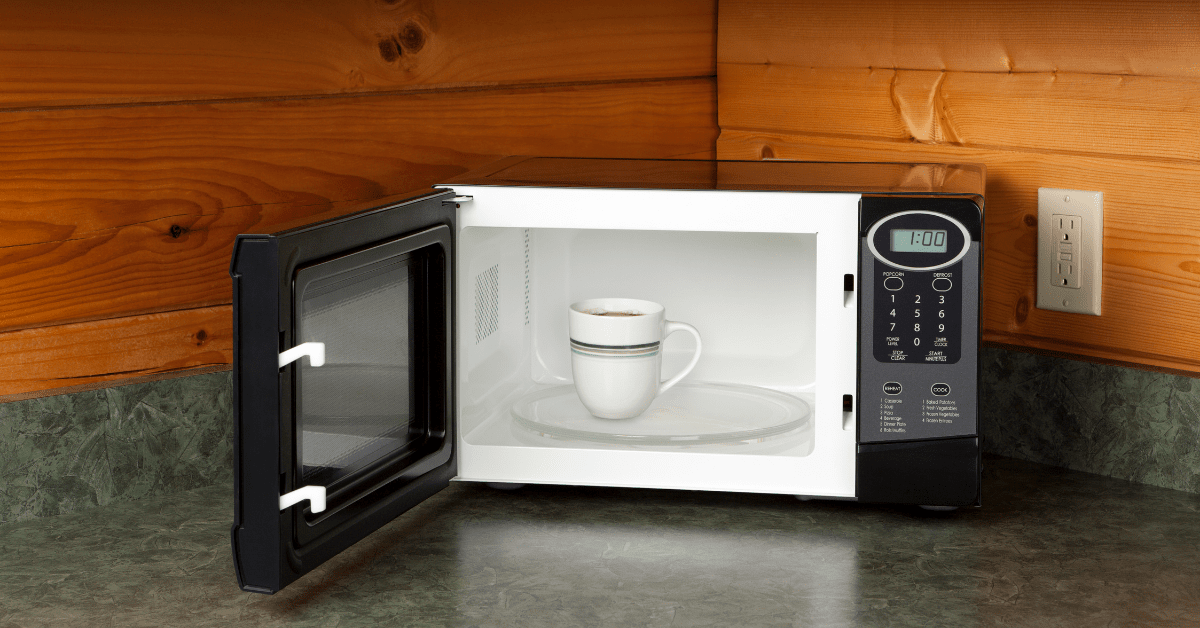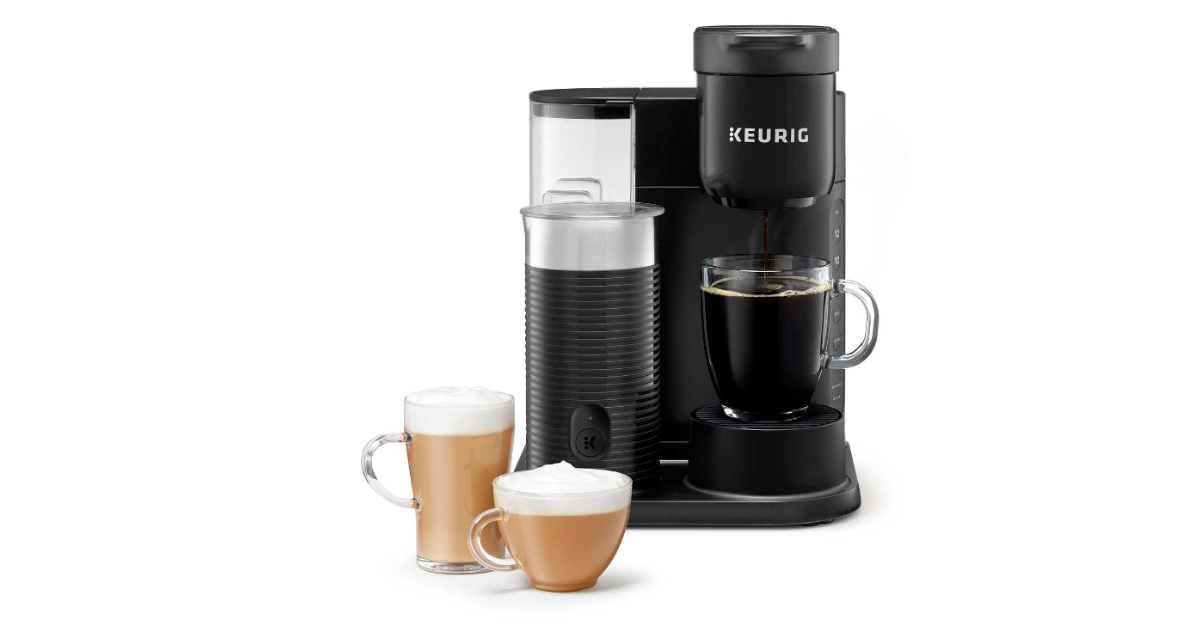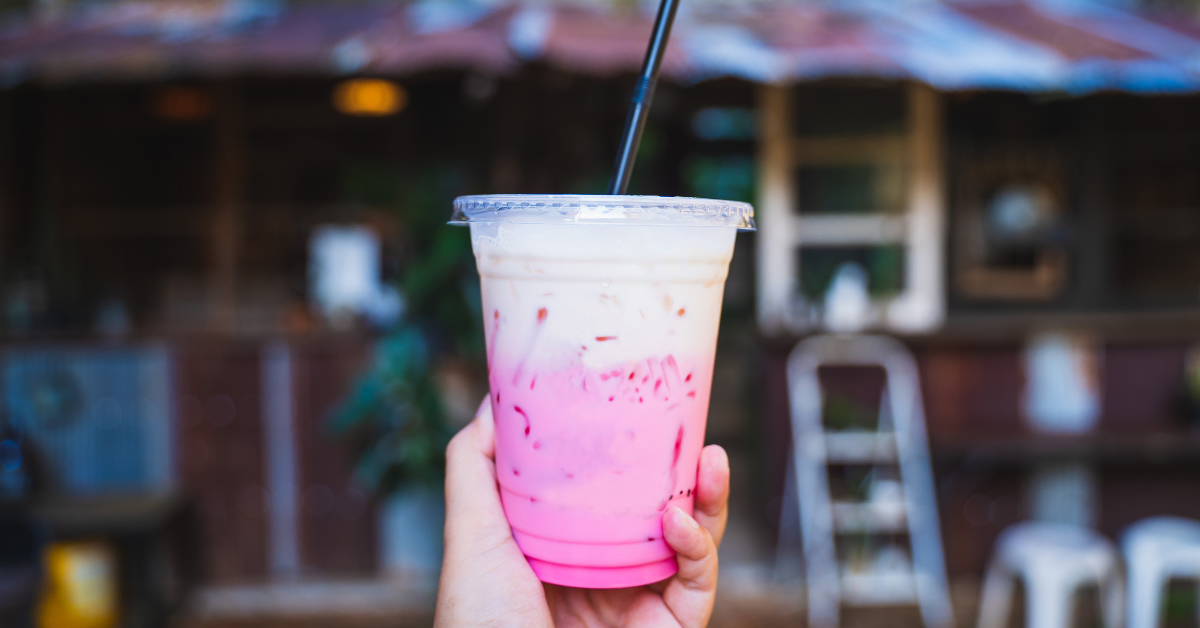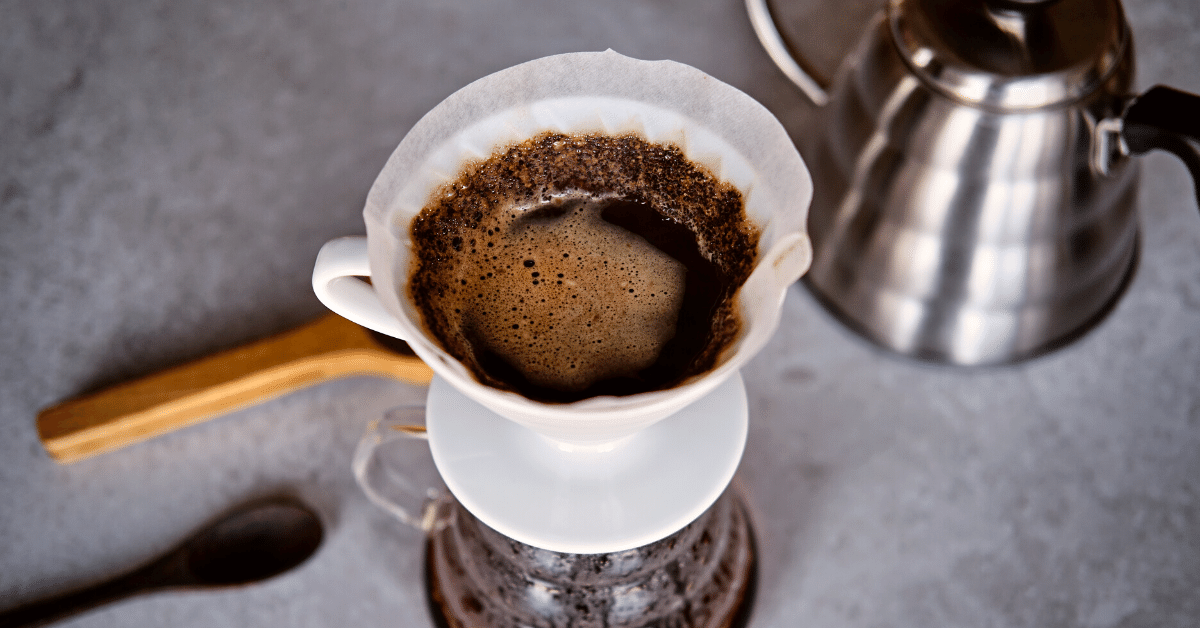If you’re an espresso lover, you’ve got to have a good machine.
Otherwise, you’re going to wind up with a weak, watery impersonation of a rich espresso drink.
So, which machine do you choose?
To help you get the right idea, here’s a guide to different types of espresso machines and how they work!
15 Different Types of Espresso Machines
At first, so many different types of espresso machines may seem overwhelming.
But, trust me.
As you get to know each one, you’ll see that it’s not as complicated as it seems.
Here are different types of espresso machines and how they work!
Manual Espresso Machine

Manual espresso machines are one of the most basic espresso-making devices out there.
Yet, that’s not to say they’re super simple!
Manual espresso machines are hand-operated devices. They don’t use electricity and are either spring piston machines or direct lever machines.
The direct lever espresso machine doesn’t have a spring.
In these devices, the lever is lifted from the bottom up to allow the water to enter. It then exerts constant pressure at a low force on the lever to make espresso.
Spring piston machines work the other way around.
The lever on the machine is pushed down from top to bottom. This lets water pass through.
Once the espresso covers the bottom of the cup, the barista lets the spring push the lever back to its initial state.
Between the direct lever and spring piston machines, the former is a bit easier to use. The resource helps to give greater consistency at the moment the lever is pushed up.
The main advantage of manual espresso machines is that you can achieve a unique flavor in each cup of coffee.
However, these machines will not work in places where there are a lot of people to serve. That’s because they can’t produce enough espresso fast enough to keep up with a bunch of coffee fiends.
You will need to grind the coffee bean yourself (aim for a fine grind), so you will need a grinder.
The cleaning is not happening automatically, of course, so you will have to do the dirty work.
You need to clean and descale these machines about once a month. And, don’t forget to regularly wipe down the outside.
IN A NUTSHELL
Using a manual machine to achieve a good espresso is a bit of a task. So, the people who generally enjoy these types of machines tend to be coffee pros.
Semi-Automatic Espresso Machine
You know those espresso machines that you’ve seen in coffee shops?

Those are semi-automatic machines.
While these commercial espresso machines cost a ton, you can also find an affordable home espresso machine with similar functions.
With semi-automatic machines, you’re in charge of grinding and tamping. But, semi-automatic machines are unique in that the machine handles creating water pressure. It also directs it through the group heads for you.
When using this type of espresso machine, you have to track the flow of the espresso coffee. Then, turn off the machine when the device is done brewing. Just like a manual machine, it takes practice.
Semi-automatic machines are good picks for those who enjoy milk-based brews. They usually feature a steam wand for milk frothing. Although it takes a bit of time to master it, you can make a silky smooth foam for your latte.
With this type of machine, a flavor of the highest quality is achieved. Many baristas prefer these machines because it allows them to maintain a lot of control over the final result of the drink.
Cleaning and maintenance of a semi-automatic machine are done once a month. Some of these machines feature a rinse function, but you will still need to wash parts manually.
IN A NUTSHELL
Semi-automatic machines work similarly to manual machines. The difference is that these work with a button to deploy the water.
Automatic Espresso Machine
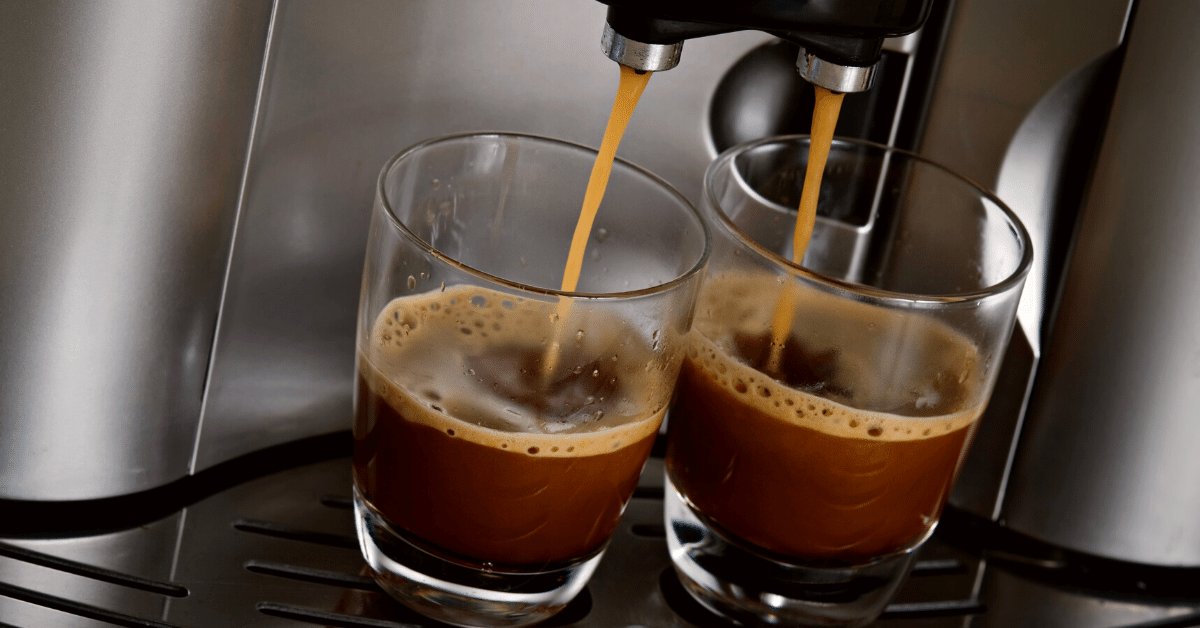
When I was just learning about automatic machines, I thought they did all the work.
The truth is that there isn’t much difference between a semi-automatic and an automatic machine.
In an automatic machine, you’ll also have to grind and tamp the beans on your own.
An automatic machine also pushes the water through the head of the group. The difference is that an automatic machine stops the flow of water automatically.
These machines can be programmed to extract a particular volume. So, you can brew a variety of drinks without paying close attention while your espresso shot is being prepared.
You can clean an automatic machine the same way you would clean a semi-automatic device.
IN A NUTSHELL
Automatic machines are easy to use because they can be programmed to use the specific amount of water needed for a particular brew.
Super-Automatic Espresso Machine
These super-automatic machines have more features than automatic machines. These machines have built-in coffee grinders for roasted coffee beans. This allows for a much fresher coffee.
To choose the size of your drink, you just have to press a button, and the machine will take care of the rest. This type of machine grinds the coffee beans correctly for each type of drink required.
It also tamps and loads the filter holder. Then, it extracts the coffee with the right volume of water and temperature.
Some models have features that draw a lot of attention, such as:
- hopper to place used coffee grounds
- warming tray where espresso cups can be stored
- different drink choices (from black coffee to specialty espresso blends)
Still, these machines don’t always have automatic milk steaming capabilities. So, they might not be ideal for making cappuccinos and lattes.
Although these machines are convenient, many enthusiasts prefer not to use them. The reason for this is that they lose control of the drink.
IN A NUTSHELL
Super-automatic machines do everything from grinding and tamping to pulling the shot, at a touch of a button. However, it also means you don’t have so much control over your drink.
Ultra-Automatic Espresso Machines

An ultra-automatic espresso machine has all the features of a super-automatic machine. But, it can also steam and foam milk. They even have mechanisms that keep milk refrigerated!
They’re usually very expensive. But, they offer the user a completely automatic preparation of coffee drinks.
To use these machines, you’ll only need to:
- add coffee beans to the hopper
- add milk to the cold milk tank.
- choose the type of drink you want
- press the start button
In a few minutes, you’ve got a fresh espresso.
With this type of machine, you can serve yourself a cappuccino or a latte, but they can’t make latte art yet. Although I wouldn’t be surprised if, in a few years, they have this option included!
IN A NUTSHELL
This machine is ideal for those who want good coffee quickly. Having an ultra-automatic machine is the closest thing to having a live-in barista at home.
Direct Connect Espresso Machine
Direct-connect (or plumbed) espresso machines have a water line connected to the machine. As a result, the water automatically feeds into the machine.
Unlike the espresso machines that I already mentioned, these machines must be installed by a professional. It’s also hard to move these machines.
As a result, these aren’t exactly things you’ll find in your neighbor’s kitchen.
Instead, these are better suited for office environments.
A direct-connect espresso machine also needs a water softener. Without this, the drink could have an unpleasant taste. This would be due to the presence of calcium and other minerals in tap water.
More importantly, if a water softener isn’t used, the machine could build up residue. This can completely ruin the machine, and since these are so pricey, that’s a pretty big deal.
IN A NUTSHELL
With this type of espresso machine, you don’t have to worry about refilling the water tank. The machine automatically replenishes water as needed.
Single Boiler Espresso Machine

This type of espresso machine is ideal for people who don’t mind waiting a bit for their second shot of espresso. (Not me!)
A single boiler machine, as the name implies, has one water boiler of water. The boiler heats steam for milk frothing as well as for brewing espresso.
The water used to prepare an espresso is colder than the water boiled to produce steam to froth the milk. If you froth the milk first, you have to wait longer for it to cool down and reach a suitable temperature.
This is why single-boiler machines are a bit slow. You have to wait for the boiler to cool down before it starts the next part of the brew cycle.
The reason for this is that temperature affects your coffee’s taste. If the beans are extracted at too high a temperature, it will negatively impact the flavor.
IN A NUTSHELL
Single boiler machines are small and ideal to have in the home because they don’t take up much space. They’re not recommended for commercial use due to the waiting time between shots.
Double Boiler Espresso Machine
As its name implies, a double-boiler espresso machine has two heat sources.
The machine uses one boiler to heat water for espresso. With the other boiler, the machine heats water for steaming milk.
By having two boilers, the barista can control both temperatures independently. Keep in mind that even small temperature changes can make big changes to the espresso flavor.
These types of machines are ideal for commercial use, but they’re also very good as home-brewing machines.
Admittedly, the price variance compared to a single-boiler machine is significantly different. These devices are quite a bit more expensive.
IN A NUTSHELL
These machines are bulkier because the second boiler uses more space. But, thanks to their other boiler, you don’t have to wait for them to cool down before moving to the next part of the brew cycle.
Steam-Driven Espresso Machine
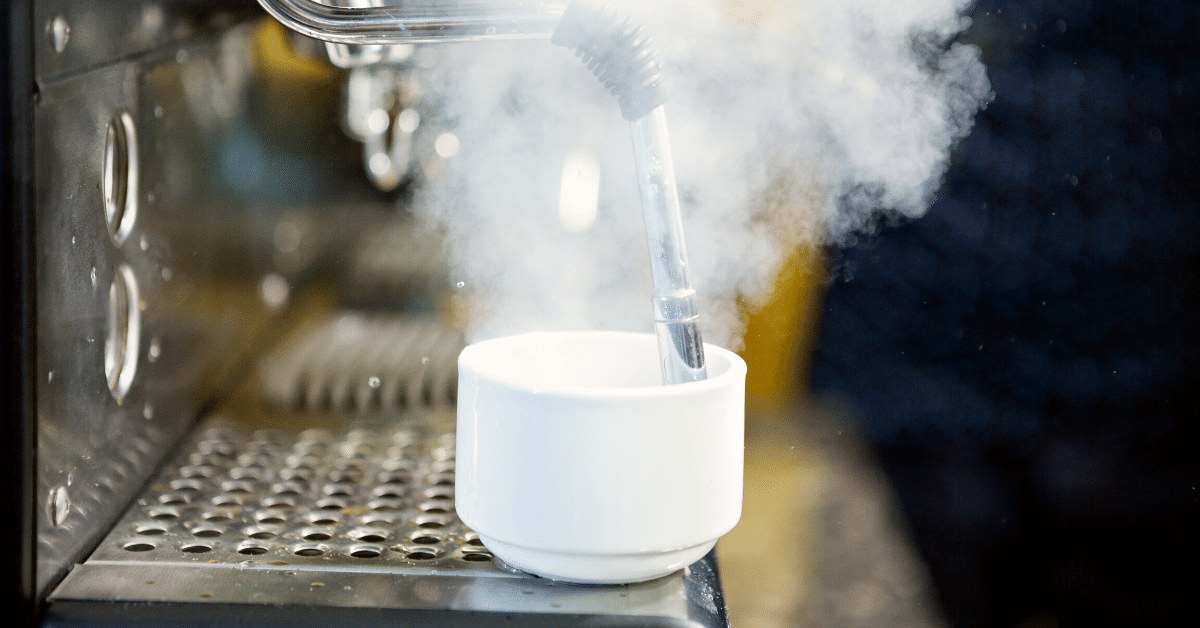
These types of espresso machines use steam or steam pressure. In this method, the steam forces the water through the ground coffee to prepare the drink.
A steam-driven machine fails to produce a traditional espresso because it lacks pressure. But this doesn’t mean that the coffee it produces isn’t rich and fresh.
They’re very much like manual espresso machines. But, you don’t need to tire yourself out pulling the levers to get an espresso.
These machines could be considered the electric version of the traditional Moka pot.
These machines need cooling time between cups. So, if you want several shots of espresso, it will take time and patience.
IN A NUTSHELL
Steam-driven machines use steam pressure instead of water pressure to extract coffee. Using these machines correctly and safely requires experience.
Pump-Driven Espresso Machine
These machines use a simple pump to achieve the pressure needed to make an espresso.
Such a machine can achieve very consistent shots.
The pressure that is exerted in this machine forces the water to the bottom. This pressure is what creates that golden crema on top of your espresso.
With these machines, the water doesn’t need to reach a boiling point to exert pressure. Instead, it just needs to get hot.
Pump-driven machines are typically cheaper than steam-driven ones. But, they’re also usually more expensive than manual espresso machines.
The disadvantage of this type of espresso machine is that you can’t really customize your drink. If you like experimenting with your espresso, this probably isn’t the right device for you.
IN A NUTSHELL
A pump-driven espresso machine doesn’t need physical exertion like a manual or steam machine.
Heat Exchanging Espresso Machine
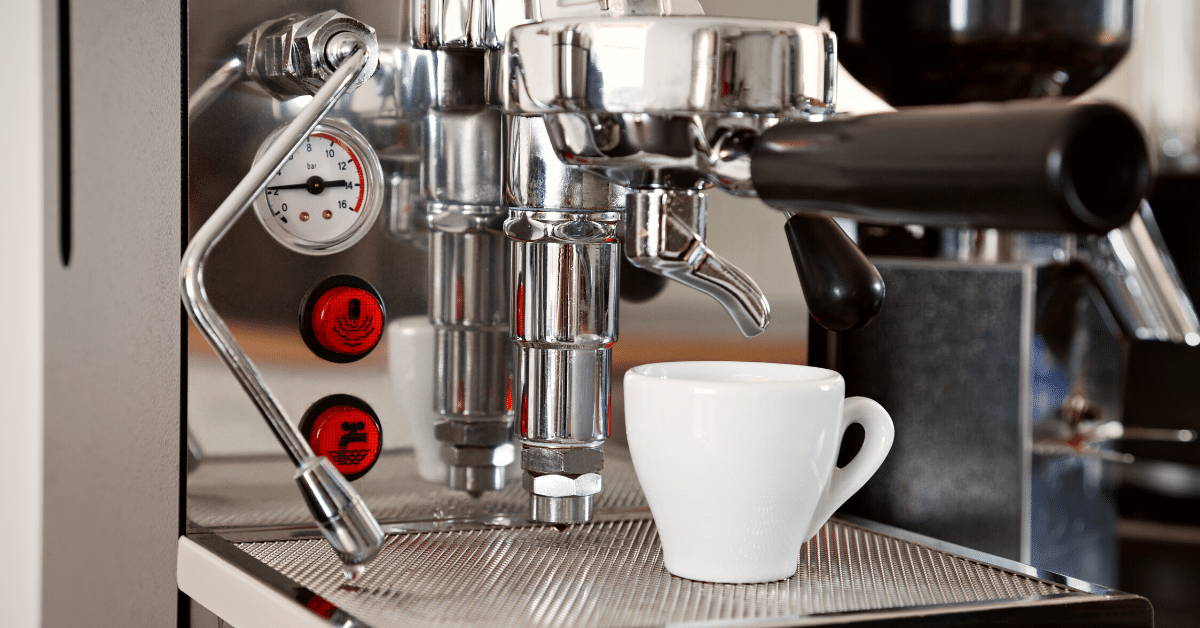
A heat exchanging machine uses a single boiler but works the same as a double boiler machine.
So, you get all the perks of a double boiler machine with none of the downsides of a single boiler!
In a heat exchanger, there is a tube inside the boiler that feeds the portafilter of the espresso machine. The job of this tube is to cool the water to a temperature of around 195° for proper brewing.
These machines are good for commercial use. But, they still don’t outperform the fast output of a double boiler machine.
IN A NUTSHELL
The boiler of this machine both heats and steams the milk, but you don’t need to wait for it to cool down. The machine uses a mechanism that reduces the temperature of the heated water.
Volumetric Espresso Machine
Volumetric espresso machines are ideal for those coffee drinkers who like to have consistent coffee.
A volumetric machine measures the amount of water that is dispensed and stops when it reaches the threshold that the user has programmed.
You only need to press a button, and the drink runs until the required water level is reached. Easy-peasy!
Most of these machines allow the user some customization. When the grinder is programmed in an ideal way, a cup with consistent flavor can be obtained.
A volumetric machine will work regardless of the size of the grind.
These types of machines are quite reliable, so you can do other things while the machine is pulling the shot.
IN A NUTSHELL
A volumetric machine allows the correct amount of water to be used in the drink for a perfect and delicious cup of espresso.
PID Temperature Control Machines
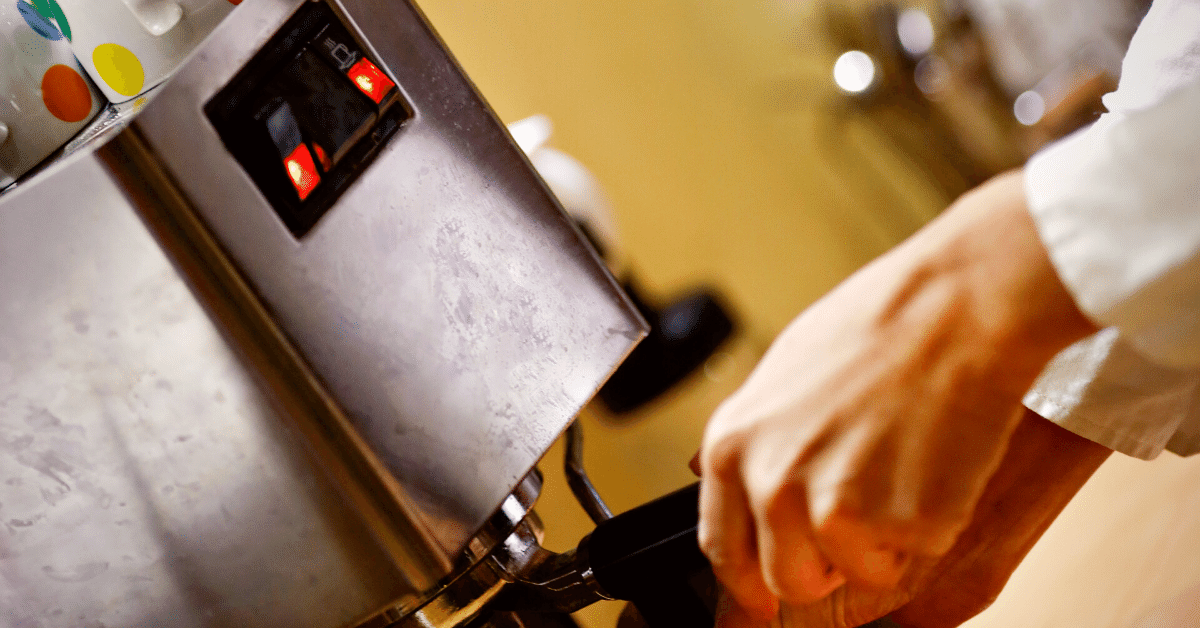
As I mentioned in previous points, the temperature when preparing an espresso is very important for a good result.
A PID (Proportional Integral Derivative) is a device with many uses, but here I will tell you specifically about its use in an espresso machine.
In simple words, this device regulates the temperature of the espresso machine.
The job of this device is to take care of monitoring the water and making sure it doesn’t get too cold or too hot.
For most people, knowing this isn’t usually that important. But, for some baristas, this takes the fun out of experimenting with coffee creation.
IN A NUTSHELL
Using a PID temperature-controlled machine allows for very consistent, high-quality shots of espresso.
Pour-Over Espresso Machine
Although they look similar, don’t confuse a pour-over machine with an automatic coffee maker. They’re quite different.
With pour-over espresso machines, you need to manually add water instead of having the machine directly draw from a water line.
Other than that, the work same as automatic espresso machines.
It’s a small machine that you can easily move from one place to another. So, they work great for people who travel a lot.
To extend the life of this type of machine, it’s recommended to use filtered water.
IN A NUTSHELL
These machines have a water tank that’s separate from the bigger device. So, you need to manually adjust the water level.
Stovetop Espresso Machines
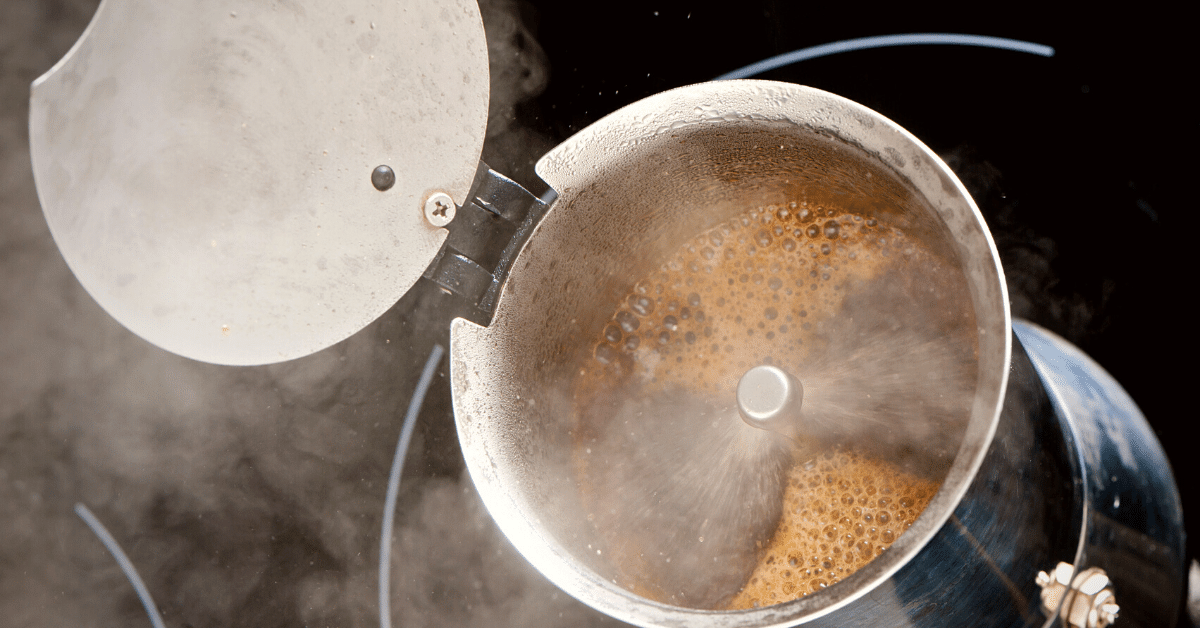
The best-known stovetop espresso machine is the Moka Pot.
They are very similar to percolators, but the extraction works differently. They use pressure for espresso extraction, and percolators don’t.
Moka pots are very simple to use.
You need to fill it with water and ground coffee, and place it on the stove over medium or high heat. Once it boils, the steam passes through the ground coffee beans to get the espresso in the upper chamber.
Of course, there are quite a few different sizes of Moka pots. You can get everything from personal devices to big, twelve-cup brewers.
Regardless of the size you pick, they’re still pretty compact espresso makers. And, all you need is heat, water, and coffee grinds to use them. As a result, many people enjoy taking them on camping trips!
With Moka pots, you don’t have much control over the preparation time or personalization of the drink.
But, they’re still great picks for beginners.
IN A NUTSHELL
Stovetop espresso machines are effortless to use, compact in size, and one of the most affordable options on the market.
Conclusion
There are tons of different types of espresso machines, each with its benefits and downsides.
Choosing the right machine for you generally boils down to your coffee preferences and skills.
With the right eye and a bit of background, you’ll be able to choose a machine that works perfectly for your situation.
Looking for the perfect espresso beans for your new machine? Check out this guide to the best espresso beans to get you started!


